Thattai
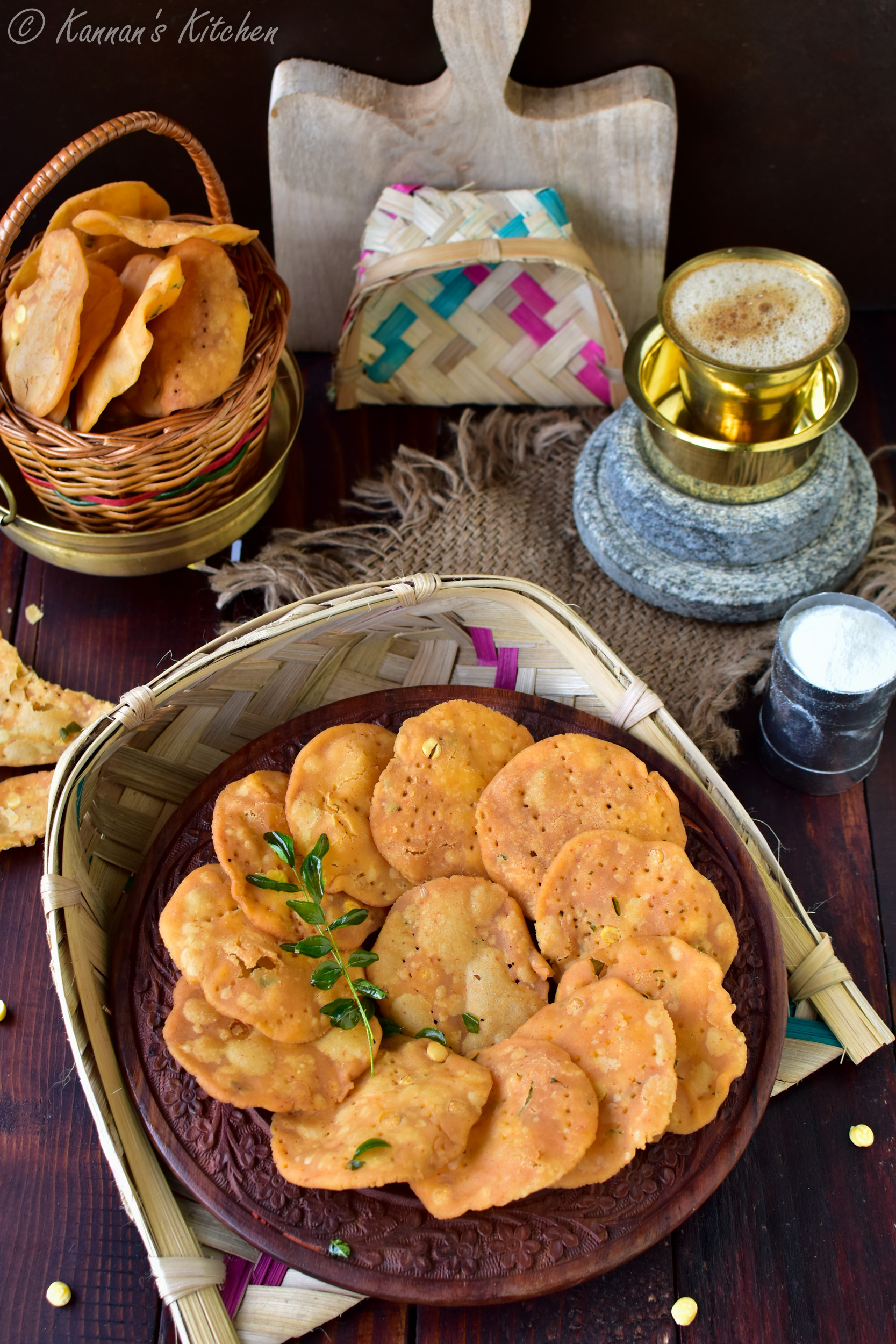
Thattai is a South-Indian style savoury snack which is flat disc in shape and made using rice flour, urad dal flour and roasted Bengal gram flour. Thattai is commonly made during the Indian festivals like Janmashtami (as an offering to Lord Krishna), Diwali and Karthikai. It can made on any given day and enjoyed as a tea-time snack or a travel snack.
Thattai is one of the most favourite savoury snack or ‘bakshanam’ (as called in Tamil) in our household. It is a perfectly crunchy snack and quite addictive. You would never stop with one or two during the evening coffee or tea. Thattai has a pretty good shelf-life of at least 2 to 3 weeks and can be stored in an air-tight container at room temperature. So you can make this snack in advance and store for long.
Thattai gets its name from the Tamil word ‘Thattu’ which literally translates to flatten. The rice flour based dough is flattened using hand to thin discs and then deep fried. This is a slightly time consuming activity as compared to other savoury snacks since it is to be done manually by hand and one-by-one but it is worth all the effort. This snack is also commonly made in other Southern states like Karnataka and Andhra Pradesh and known by name ‘Nippattu’. Though both Thattai and Nippattu are rice flour based snacks, but are slightly different in terms of the ingredients that go in each of the recipe.
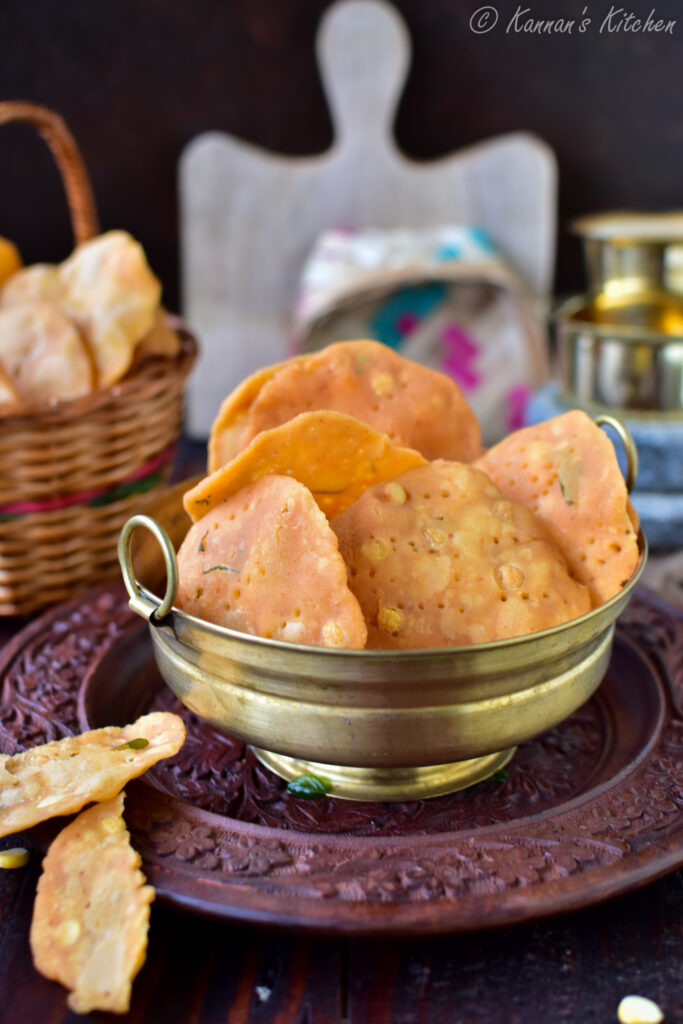
The main ingredient for making Thattai is Rice Flour. Traditionally for making most of the rice flour based savoury snacks like Thattai, Tenguzhal, Ribbon Pakoda, Seedai etc., we make use of the home-made rice flour. This is especially important for snacks like Seedai, and yields the best texture and taste. However the rice flour making process is slightly time consuming as it involves soaking the rice, drying it, followed by grinding, sieving and then roasting it. A quick alternative to this is a good quality store bought rice flour or Idiyappam flour which particularly works well for Thattai.
In this recipe, I am have given the steps for making Thattai using store bought rice flour. You could use the same recipe below if you are using homemade rice flour too. The steps for making homemade rice flour are given in my Vella Seedai and Uppu Seedai recipe.
Thattai is a fairly simple recipe, however getting the texture right is the key thing here. A good thattai will be super crisp and crunchy, however it should not be hard to bite. Thattai must have a good snap when we break and have the right hardness to bite. This could easily go wrong if some important steps are not followed correctly. The ratio of the ingredients and butter is also quite important.

Below are some of the common issues faced while making thattai. If you follow the corresponding tips and tricks in the answer section, you would never go wrong in making Thattai
This is one of the most commonly faced issue and is a deal breaker for taste of any thattai. There are two important things to get the right texture:
1. Ratio of butter to flour – Use 1.5 tablespoon of butter (levelled and not heap) for every 1 cup of rice flour and you get the perfect texture. If you use lesser than this, thattai would be hard.
2. Temperature of Oil – Thattai crisps evenly well when it is cooked in medium flame. If you cook on low flame, it could absorb more oil, and when fried in high flame, it would brown quickly and not crisp through inside.
The culprit here is again the ratio of butter and rice flour. If butter is added more than the above mentioned ratio, it would absorb more oil.
Thattai tends to puff up like Puri if it is not docked with fork or toothpick. It is important to make these small holes in each thattai so that it does not puff up. Prick each thattai at least 5 to 6 times.
This is to do with the thickness of the thattai. Thattai must be flattened to thin disc, and if it is not thin enough, then it might not crisp throughout. Also make sure to fry in medium flame to get uniform crispness.
While it is important to flatten the thattai thin, however if you make it too thin, it would be quite brittle and hard. So keep it medium thick like we roll puri.
Serving Suggestion
Thattai is best served as an evening tea-time or coffee-time snack. It can be had as is and pairs well with a cup of strong filter coffee. Thattai can be stored at room temperature in an air-tight box and stays fresh for a minimum of 2 to 3 weeks. It can be packed as a snack for travel too.
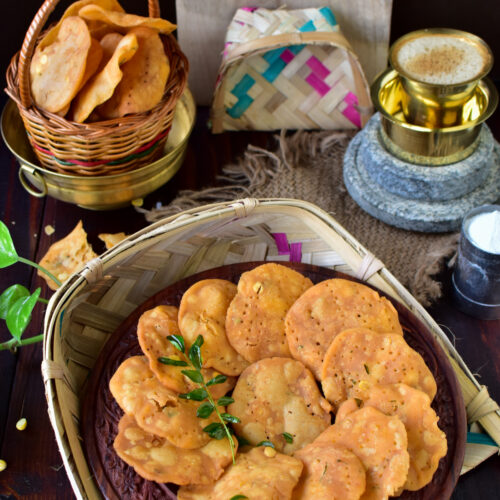
Thattai
Equipment
- Measuring Cups and Spoons
- Fork or Toothpick
Ingredients
- 2 Cups Rice Flour
- 3 tbsp Roasted Urad Dal Flour
- 1½ tbsp Pottukadalai or Roasted Bengal Gram Flour (which is used in coconut chutney)
- 2-3 tbsp Channa Dal
- 3 tbsp (levelled) Butter at room temperature
- 2 tsp Red Chilli Powder
- 2-3 Sprigs Curry Leaves
- ¼ tsp Asafoetida or Hing
- Oil for frying
- Salt to taste
Instructions
- Soak channa dal in water for 1 to 2 hours. Then drain the water.
- If you have roasted urad dal flour, skip this step and next step. Take ¼ cup of urad dal and dry roast in a pan on low flame till you get the aroma and just turns slightly pink in colour.
- Cool the roasted urad dal, and grind in mixer to a fine powder. Sieve this flour.
- If you do not have roasted bengal bram flour or Pottukadalai flour, grind ¼ cup of Pottukadalai to a fine powder and sieve it.
- Take a large bowl. Add all the flour – rice flour, 3 tbsp of Urad dal flour, 1½ tbsp of Pottukadalai flour and sieve well.
- Now to this, add the soaked and drained channa dal, asafoetida, salt, red chilli powder, finely chopped curry leaves, room temperature butter and mix well. The butter must be incorporated uniformly in the flour.
- Now adding water gradually, knead this to s smooth dough. I used roughly 1¾ cup of water for kneading the dough. This could be less or more depending on the rice flour.
- Cover and rest the dough for 5 minutes.
- Heat oil in a large kadai.
- Now take a plastic sheet or ziplock cover and grease with little oil.
- Take puri sized balls of dough.
- Grease your fingers with little oil and flatten it uniformly to a thin round disc. It should not be too thick, nor too thin. It should be roughly the thickness of Puri and should not tear when you try to peel it from the plastic sheet.
- Now using a fork or toothpick, prick each of the thattai at least 5 to 6 times.
- Now peel off each of the thattai carefully from the sheet and drop in hot oil. Fry the thattai on medium flame.
- Flip and cook the thattai till it turns pink and colour and the bubbles start subsiding. Drain the thattai from oil and let it cool. Do note that thattai would continue to change colour once taken out of oil, so do not go by the colour alone for when to take it out of oil.
- Repeat making thattai as per the above steps. Once the thattai have come to room temperature, store it in an air-tight container.
Notes
- It is important to sieve the flour to get rid of any impurities or lumps.
- Follow the ratio precisely, else it could alter the taste and texture of thattai.
- Use butter which is at room temperate and note that it is levelled tablespoon as per the above recipe. Use a finger to level the butter in each tablespoon to get the right amount of butter. Anything in excess will make thattai to absorb more oil while cooking.
- Make sure to flatten the thattai not too thick, nor too thin.
- Prick the thattai using fork or toothpick, else thattai will puff up and not crispen.
- You can also add white sesame seeds to thattai while kneading the dough.
- Fry thattai in medium flame only to get uniform crispness.
- Do note that thattai continues to cook and change colour even after taking out of oil. So remove thattai from hot oil as soon as the bubbles start subsiding.
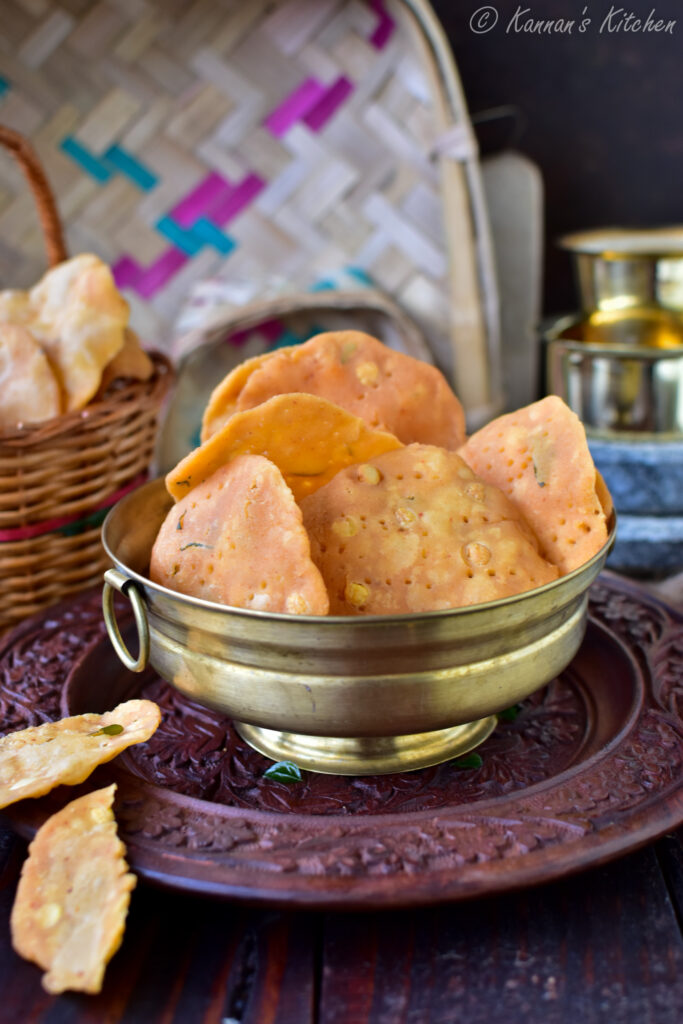

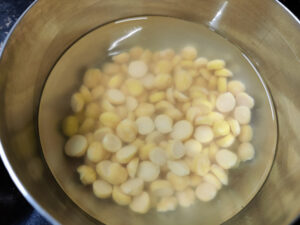
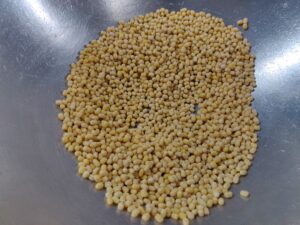

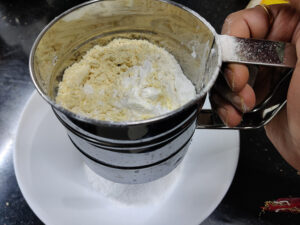


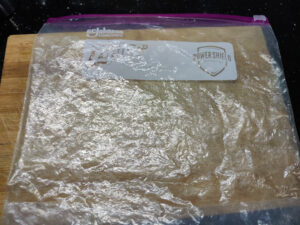




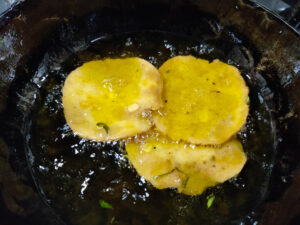
Just followed the recipe to T … got perfect tattai… thanks Kannan
Thank you so much for trying and the feedback 🙂 Glad you liked it